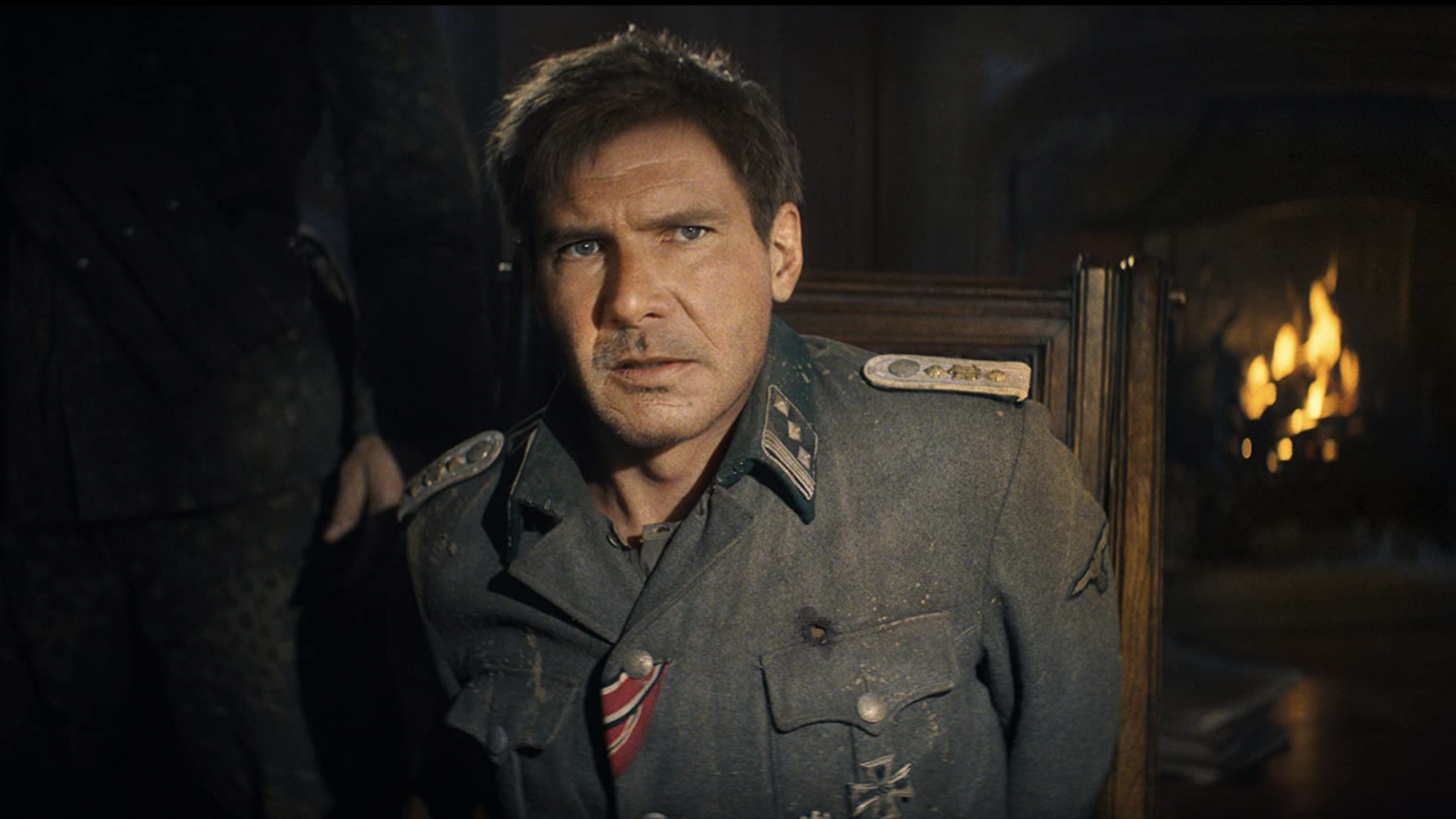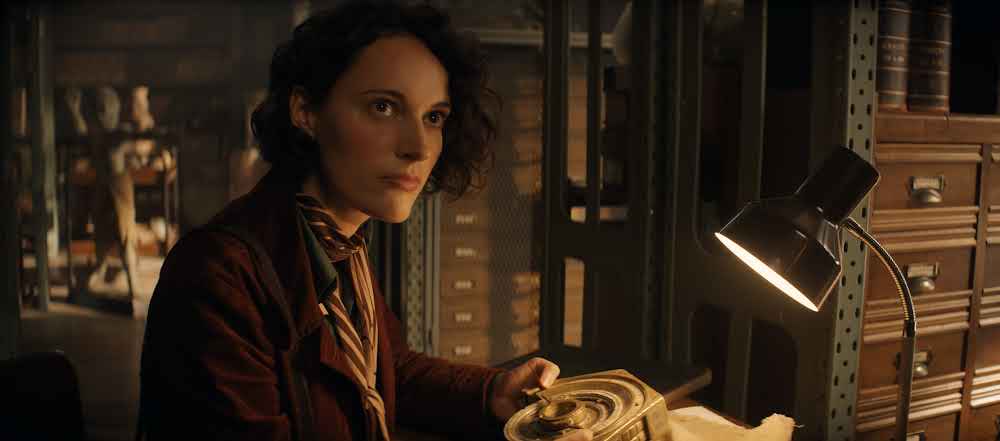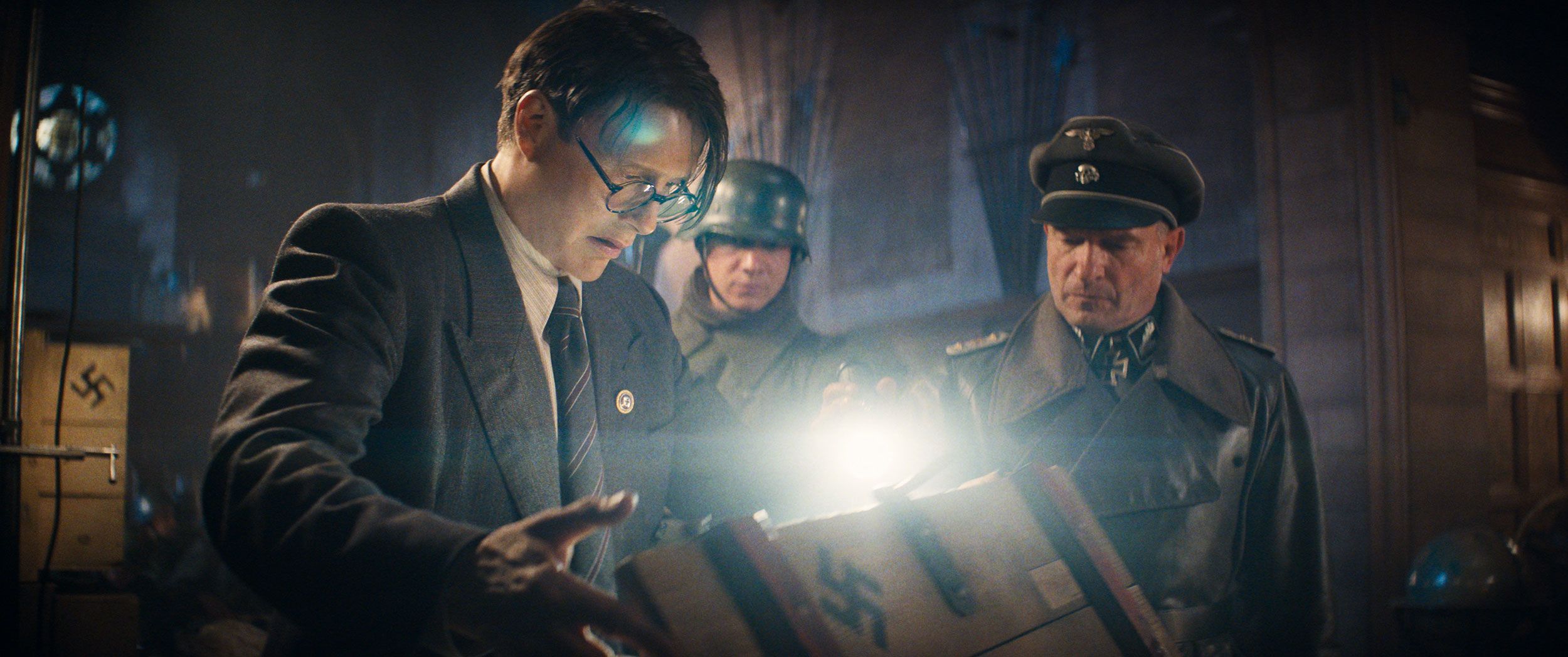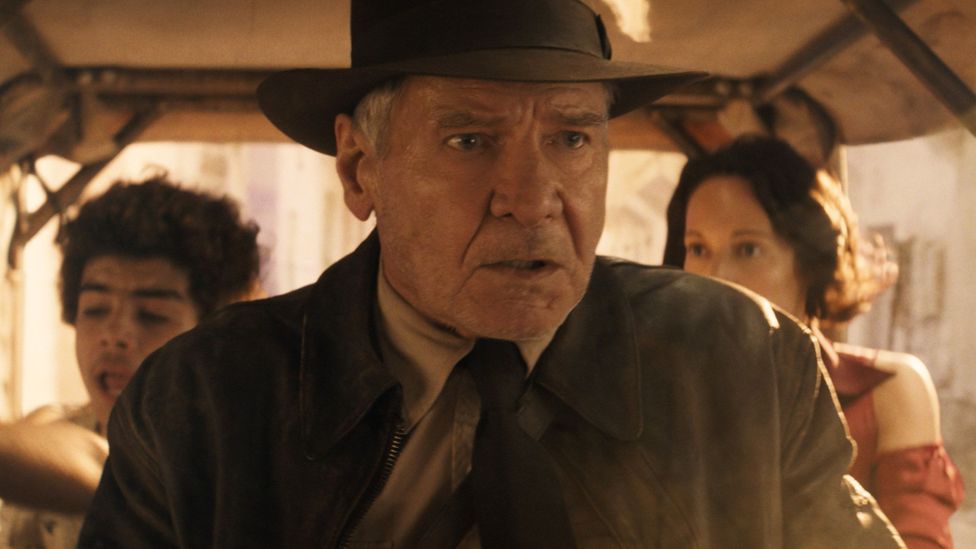Like one of the title character’s archaeological finds, the first 20 minutes of Indiana Jones and the Dial of Destiny feel like a lost Indiana Jones film unearthed. A lost Lost Ark, if you will. Through the magic of deepfake technology – and it’s starting to feel more like magic, less like the uncanny valley – we see Harrison Ford as he looked in 1995, if they’d made an Indiana Jones film between Last Crusade and Kingdom of the Crystal Skull. That would be consistent with the later films’ decisions to forward the narrative by the number of years since the last film, so a 1944 time period would be six years after the 1938 setting of 1989’s Last Crusade – hence a 1995 Ford. (Sounds like a car.)
And these 20 minutes, set in Germany during the Allied liberation of Europe, compare favourably to any previous 20 minutes in the Indiana Jones saga. They’re replete with Indy wriggling his way out of should-be-fatal jams, having fights on vehicles that expose his head to decapitation, and punching out Nazis, the punches landing with the fullness and sound of a gunshot. The digitally replicated Ford has all the easy charisma and snappy wit of the young Ford, and this sequence fills you with equal rushes of excitement and anticipation about the two hours to come.
It’s probably no surprise that those remaining two hours can’t live up to the standards director James Mangold has newly set for us, and the expectations we now find ourselves having, even if we came in highly suspicious of the project on the whole. The last Indiana Jones movie in 2008 was supposed to be the “geriatric Indiana Jones movie.” Ford turns 81 next week. He should be well and truly retired on his ranch, smoking a spliff.
What’s wrong with Indiana Jones and the Dial of Destiny, in among a lot of things that are right, doesn’t have to do with Ford’s age or anything cringey about him still donning the jacket, whip and fedora on into his ninth decade on the planet. Ford actually finds himself in one of the most fertile periods of his career, both in quality and quantity, and we know that every minute we spend on screen with him is a treasure to be cherished.
No, Indiana Jones and the Dial of Destiny asks a suspension of disbelief that goes even beyond Crystal Skull’s appearance of aliens and nuclear blast survival via refrigerator. Discussing the nature of that suspension would get into spoiler territory, and if there’s any sort of cultural event that deserves not to be spoilt, it’s an Indiana Jones movie. And since that suspension of disbelief doesn’t arrive for nearly another two hours after that thrilling opening sequence, there’s a lot of pretty good Indiana Jones material to enjoy in between.
Professor Jones isn’t yet retired. He’s not getting through to his students in 1969, who are distracted by the moon landing, so he’s about ready to make it official. That’s when a woman from his past appears, who was a girl the last time he saw her. The daughter of his colleague Basil Shaw (Toby Jones), who figures into the film’s opening, has grown into a woman named Helena (Phoebe Waller-Bridge), nicknamed “Wombat.” She’s also a budding archaeologist and has interest in an object her father and Indy recovered in the Germany skirmish. It’s called the Antikythera – a.k.a. the dial of destiny – and it was an object engineered by Archimedes in the third century BC, often thought of as the world’s first analog computer. (It’s a real thing, though it is not known for sure that Archimedes was the one who designed it.)
The dial is believed to have mystical powers – again, no spoilers – so that means it is also being sought by all sorts of bad actors. One of these is a crew of ruthless CIA agents led by Boyd Holbrook and Shaunette Renee Wilson. Another, more ominous antagonist is a man who calls himself Schmidt (Mads Mikkelsen), one of the engineers who helped the U.S. get to the moon. But Indy recognises him as the Nazi he last saw atop a train in Germany, trying to get the dial from him 25 years earlier. Then again, Helena is a bit of an antagonist herself, as she may want the dial for the wrong reasons, and may be willing to deceive Indy to get it. And just when he thought his worst concerns were a bunch of bored students and a pending divorce from his wife Marion (Karen Allen).
What follows is a series of set pieces that all have a distinctly Indiana Jones flavour, and most of which have an infectious zip. As likely as today’s delayed sequels are to rest on their laurels and lean heavily into fan service, Dial of Destiny is not a carbon copy of whatever Indiana Jones movie its producers think we might be most nostalgic to revisit. Little bits of the previous movies appear here and there, but there’s also material that feels like an interesting case of branching out. For example, did you ever think you would see Indiana Jones scuba diving?
Does it all work equally well? Of course not. The script, by a team of Mangold, Jez Butterworth, John-Henry Butterworth and David Koepp, definitely introduces some ideas that it doesn’t sufficiently flesh out, or leaves dangling for reasons beyond the interest in further sequelising the series. One of these is that Indy is living with the pain of having lost a son in the war – Vietnam, it would appear, though the name is never evoked – and this basically only factors into one exchange of dialogue. (Incidentally, that would be Shia LaBeouf’s character from Crystal Skull, though he is never named. Good riddance, most of us would probably say.)
A presence who does work well is Waller-Jones as Helena, Indy’s female lead since Allen’s Marion is relegated to a single scene. As anyone would know from watching the actress in Fleabag and elsewhere, she’s got a spitfire persona and is always the most interesting thing on screen to look at. For all she brings to her every moment, though, some of the script’s weaknesses are most evident in the conception of her character. They’re committed enough to making her morally and ethically problematic, for long enough, that when she is salvaged into someone more sympathetic, it’s rushed.
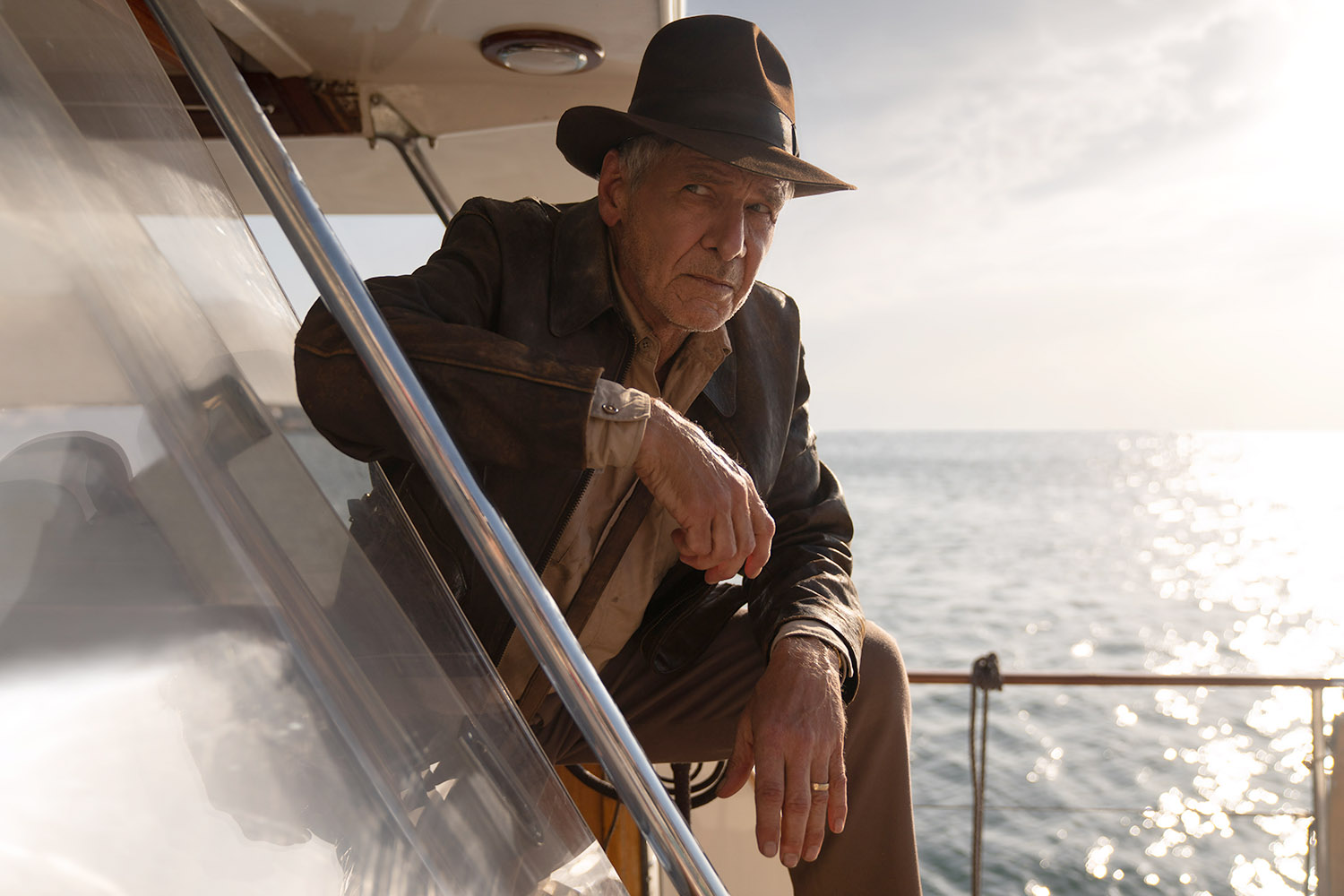
And at two hours and 34 minutes, Mangold et al had time not to rush anything. Indiana Jones and the Dial of Destiny may be about the best-case scenario for a movie made for cynical reasons of profiting off IP, but that doesn’t mean it’s always the Indiana Jones movie we want. It goes to places in the plot that are dubious enough that we might prefer the movie didn’t exist at all. Since it does exist, it’s worth mining for the nostalgia it offers, and plenty of your standard popcorn movie thrills. It’ll tide you over until the next inevitable incarnation of the series, when the digital effects are good enough for an entire movie of a young Indiana Jones.
Indiana Jones and the Dial of Destiny is currently playing in cinemas.
